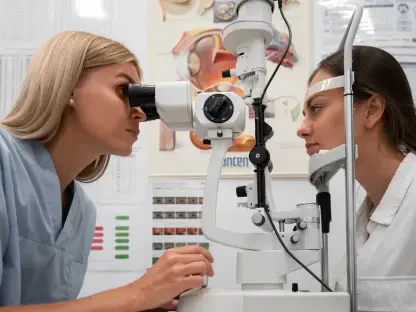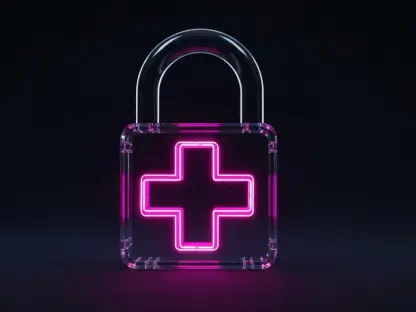Imagine a scenario where nursing students can navigate the high-stakes environment of childbirth without the risk of real-world consequences, mastering complex situations like breech births or sudden hemorrhages in a controlled setting at the University of Illinois Chicago (UIC). This vision is becoming reality through the power of simulation-based training. During Healthcare Simulation Week, which kicks off on September 15 each year, UIC College of Nursing introduced MamaAnne, an advanced obstetric manikin designed to replicate intricate birthing scenarios. Supported by the Society for Simulation in Healthcare, this event underscores the growing importance of simulation as a cornerstone in healthcare education. By providing a safe space to practice, make errors, and learn, simulation is equipping nursing students with the skills and confidence needed to tackle real-world challenges, ensuring they step into clinical settings prepared for anything.
The Power of Experiential Learning
Bridging Theory and Practice
Simulation offers an unparalleled opportunity for nursing students at UIC to transform theoretical knowledge into practical expertise without the fear of harming patients. Housed in the M. Christine Schwartz Experiential Learning & Simulation Laboratory, tools like MamaAnne allow students to engage in realistic birthing scenarios, from normal deliveries to critical emergencies such as postpartum hemorrhages. This hands-on approach ensures that learners can experiment with different responses, analyze outcomes, and refine their techniques in a risk-free environment. The ability to repeat complex procedures until mastery is achieved builds a depth of understanding that traditional classroom learning alone cannot provide. As students navigate these simulations, they develop a keen sense of how to manage the unpredictable nature of obstetrics, preparing them for the dynamic challenges they will face in hospitals and clinics.
Fostering Clinical Confidence
The impact of simulation extends far beyond technical skill development, playing a pivotal role in shaping the professional confidence of nursing students at UIC. Testimonials from learners, such as Tamara Stewart, highlight how the Schwartz Lab serves as a crucial stepping stone between academic study and hospital practice. Engaging with MamaAnne in simulated scenarios provides a safe haven to make mistakes, ask questions, and receive immediate feedback from instructors. Faculty members, including Dean Eileen Collins, emphasize that these experiences are instrumental in cultivating quick-thinking, competent clinicians who can handle pressure with poise. By repeatedly facing high-stakes situations in a controlled setting, students build the mental resilience and self-assurance needed to deliver exceptional patient care, ensuring they are not just prepared but truly ready to transition into real clinical environments.
The Role of Technology in Nursing Education
Cutting-Edge Tools Enhancing Learning
At the heart of UIC’s simulation initiatives lies a commitment to integrating state-of-the-art technology, exemplified by the introduction of MamaAnne, made possible through a generous gift from University of Illinois Urbana-Champaign alums Nita and Phil Francis. This high-fidelity manikin is operated from a sophisticated control room where instructors can adjust responses in real time, tailoring each scenario to meet specific educational goals. Whether simulating a sudden change in vital signs or a rare birthing complication, this technology ensures students are exposed to a broad spectrum of clinical challenges. Such customization allows for targeted learning, where each session is designed to address particular weaknesses or introduce new complexities. As a result, nursing students gain a comprehensive skill set that prepares them for the diverse demands of obstetric care, reinforcing UIC’s dedication to staying at the forefront of educational innovation.
Realism in Every Detail
The realism embedded in simulation tools like MamaAnne significantly enhances the learning experience for UIC nursing students, offering an authentic glimpse into the realities of patient care. Equipped with features that mimic human physiological responses—such as adjustable heart rates, breathing patterns, and even contractions—this advanced manikin creates an immersive environment that mirrors actual clinical settings. Students can practice critical decision-making under conditions that closely resemble real emergencies, allowing them to develop both technical proficiency and emotional preparedness. Instructors leverage these capabilities to introduce unexpected twists, ensuring that learners adapt to the fluid, often chaotic nature of healthcare delivery. This dedication to realism not only sharpens clinical skills but also instills a deeper understanding of patient needs, equipping future nurses with the ability to respond effectively in any situation they might encounter.
Simulation Beyond Nursing: A University-Wide Approach
Interdisciplinary Methods Across Colleges
Simulation training at UIC transcends the boundaries of the College of Nursing, reflecting a university-wide commitment to innovative healthcare education across various disciplines. At the College of Medicine’s Simulation and Integrative Learning Institute, medical students participate in the Rehearsal for Authenticity Program, where actors portray patients to simulate real-life interactions. This unique approach focuses on honing essential interpersonal skills like communication, empathy, and cultural sensitivity, which are just as vital as technical expertise in providing comprehensive patient care. By engaging with simulated patients, students learn to navigate complex emotional and ethical dilemmas, ensuring they are well-rounded providers. This interdisciplinary strategy highlights how simulation serves diverse educational needs, preparing all health science students for the multifaceted challenges of their future careers.
Customization and Control in Training
A standout feature of simulation programs at UIC is the emphasis on flexibility and customization, allowing faculty to adapt training to individual student needs across both nursing and medical disciplines. In the Schwartz Lab, instructors can tweak MamaAnne’s settings to replicate specific birthing complications, ensuring each session targets particular learning objectives. Similarly, in the medical program, scenarios with actor-patients can be paused or revisited to refine difficult conversations or address specific interpersonal challenges. This level of control enables educators to create a tailored learning journey, exposing students to a wide array of situations they might face in practice. Such adaptability ensures that whether mastering a technical procedure or navigating a sensitive patient interaction, learners are equipped to handle the unpredictable demands of healthcare with confidence and competence, solidifying UIC’s reputation for cutting-edge training.
Building Community Through Simulation
Fostering Engagement and Support
Beyond its educational benefits, simulation at UIC also plays a significant role in fostering a sense of community among students and faculty, enriching the overall learning environment. A notable example occurred after MamaAnne’s simulated births, when the College of Nursing organized a celebratory baby shower, complete with donations to the UI Health Mother/Baby Unit. This event not only marked a milestone in training but also brought together participants in a shared moment of joy and connection. Such initiatives demonstrate how simulation extends past mere skill-building, creating opportunities for camaraderie and mutual support. By integrating these communal experiences, UIC ensures that students feel part of a nurturing network, which is essential for personal growth and professional resilience in the demanding field of healthcare, enhancing their journey from classroom to clinic.
Strengthening Bonds Through Shared Learning
The communal aspect of simulation training at UIC further strengthens bonds through shared learning experiences, leaving a lasting impact on students’ professional development. During simulation exercises, nursing students collaborate in teams to manage complex scenarios, mirroring the teamwork required in real hospital settings. These interactions foster trust and communication among peers, while faculty guidance adds a layer of mentorship that enriches the process. Events like the baby shower celebration following MamaAnne’s simulations also serve as a reminder of the human element in healthcare, encouraging students to value empathy and connection alongside clinical skills. Reflecting on these moments, it’s evident that the collaborative spirit nurtured through simulation has a profound effect, helping to build a supportive foundation that students carry into their careers, ensuring they are not only skilled but also compassionate caregivers.









